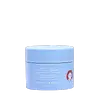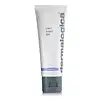What's inside
What's inside
 Key Ingredients
Key Ingredients

 Benefits
Benefits

 Concerns
Concerns

No concerns
 Ingredients Side-by-side
Ingredients Side-by-side

Water
Skin ConditioningGlycerin
HumectantSqualane
EmollientDimethicone
EmollientPhenyl Trimethicone
Skin ConditioningBetaine
HumectantNiacinamide
SmoothingPentylene Glycol
Skin ConditioningPolyglyceryl-3 Polydimethylsiloxyethyl Dimethicone
Skin ConditioningPropanediol
SolventSodium Hyaluronate
HumectantCeramide NP
Skin ConditioningColloidal Oatmeal
AbsorbentTocopherol
AntioxidantSorbitan Isostearate
EmulsifyingDecyl Glucoside
CleansingSodium Acryloyldimethyltaurate/Vp Crosspolymer
Emulsion StabilisingHydroxyethyl Acrylate/Sodium Acryloyldimethyl Taurate Copolymer
Emulsion StabilisingCaprylyl Glycol
EmollientEthylhexylglycerin
Skin ConditioningButylene Glycol
HumectantDimethicone/Polyglycerin-3 Crosspolymer
CleansingGlyceryl Glucoside
HumectantDimethiconol
EmollientPolysilicone-11
1,2-Hexanediol
Skin ConditioningHydroxyacetophenone
AntioxidantHexylene Glycol
EmulsifyingPhenoxyethanol
PreservativePolysorbate 60
EmulsifyingWater, Glycerin, Squalane, Dimethicone, Phenyl Trimethicone, Betaine, Niacinamide, Pentylene Glycol, Polyglyceryl-3 Polydimethylsiloxyethyl Dimethicone, Propanediol, Sodium Hyaluronate, Ceramide NP, Colloidal Oatmeal, Tocopherol, Sorbitan Isostearate, Decyl Glucoside, Sodium Acryloyldimethyltaurate/Vp Crosspolymer, Hydroxyethyl Acrylate/Sodium Acryloyldimethyl Taurate Copolymer, Caprylyl Glycol, Ethylhexylglycerin, Butylene Glycol, Dimethicone/Polyglycerin-3 Crosspolymer, Glyceryl Glucoside, Dimethiconol, Polysilicone-11, 1,2-Hexanediol, Hydroxyacetophenone, Hexylene Glycol, Phenoxyethanol, Polysorbate 60
Water
Skin ConditioningGlycerin
HumectantAloe Barbadensis Leaf Juice
Skin ConditioningDimethicone
EmollientButylene Glycol
HumectantPyrus Malus Fruit Extract
Skin Conditioning1,2-Hexanediol
Skin ConditioningDiethylhexyl Carbonate
EmollientOpuntia Ficus-Indica Stem Extract
Skin ConditioningSodium Hyaluronate
HumectantDipotassium Glycyrrhizate
HumectantHydrolyzed Sodium Hyaluronate
Skin ConditioningLavandula Angustifolia Flower Extract
CleansingStearyl Heptanoate
EmollientCetyl PEG/PPG-10/1 Dimethicone
EmulsifyingHydroxyacetophenone
AntioxidantSea Salt
AbrasiveDimethicone Crosspolymer
Emulsion StabilisingStearyl Caprylate
EmollientLauryl PEG-9 Polydimethylsiloxyethyl Dimethicone
Skin ConditioningPotassium Sorbate
PreservativeCitric Acid
BufferingSodium Benzoate
MaskingDisodium Phosphate
BufferingLinalool
PerfumingLimonene
PerfumingWater, Glycerin, Aloe Barbadensis Leaf Juice, Dimethicone, Butylene Glycol, Pyrus Malus Fruit Extract, 1,2-Hexanediol, Diethylhexyl Carbonate, Opuntia Ficus-Indica Stem Extract, Sodium Hyaluronate, Dipotassium Glycyrrhizate, Hydrolyzed Sodium Hyaluronate, Lavandula Angustifolia Flower Extract, Stearyl Heptanoate, Cetyl PEG/PPG-10/1 Dimethicone, Hydroxyacetophenone, Sea Salt, Dimethicone Crosspolymer, Stearyl Caprylate, Lauryl PEG-9 Polydimethylsiloxyethyl Dimethicone, Potassium Sorbate, Citric Acid, Sodium Benzoate, Disodium Phosphate, Linalool, Limonene
 Reviews
Reviews

Ingredients Explained
These ingredients are found in both products.
Ingredients higher up in an ingredient list are typically present in a larger amount.
1,2-Hexanediol is a synthetic liquid and another multi-functional powerhouse.
It is a:
- Humectant, drawing moisture into the skin
- Emollient, helping to soften skin
- Solvent, dispersing and stabilizing formulas
- Preservative booster, enhancing the antimicrobial activity of other preservatives
Butylene Glycol (or BG) is used within cosmetic products for a few different reasons:
Overall, Butylene Glycol is a safe and well-rounded ingredient that works well with other ingredients.
Though this ingredient works well with most skin types, some people with sensitive skin may experience a reaction such as allergic rashes, closed comedones, or itchiness.
Learn more about Butylene GlycolDimethicone is a type of synthetic silicone created from natural materials such as quartz.
What it does:
Dimethicone comes in different viscosities:
Depending on the viscosity, dimethicone has different properties.
Ingredients lists don't always show which type is used, so we recommend reaching out to the brand if you have questions about the viscosity.
This ingredient is unlikely to cause irritation because it does not get absorbed into skin. However, people with silicone allergies should be careful about using this ingredient.
Note: Dimethicone may contribute to pilling. This is because it is not oil or water soluble, so pilling may occur when layered with products. When mixed with heavy oils in a formula, the outcome is also quite greasy.
Learn more about DimethiconeGlycerin is already naturally found in your skin. It helps moisturize and protect your skin.
A study from 2016 found glycerin to be more effective as a humectant than AHAs and hyaluronic acid.
As a humectant, it helps the skin stay hydrated by pulling moisture to your skin. The low molecular weight of glycerin allows it to pull moisture into the deeper layers of your skin.
Hydrated skin improves your skin barrier; Your skin barrier helps protect against irritants and bacteria.
Glycerin has also been found to have antimicrobial and antiviral properties. Due to these properties, glycerin is often used in wound and burn treatments.
In cosmetics, glycerin is usually derived from plants such as soybean or palm. However, it can also be sourced from animals, such as tallow or animal fat.
This ingredient is organic, colorless, odorless, and non-toxic.
Glycerin is the name for this ingredient in American English. British English uses Glycerol/Glycerine.
Learn more about GlycerinHydroxyacetophenone is antioxidant with skin conditioning and soothing properties. It also boosts the efficiency of preservatives.
This ingredient is not irritating or sensitizing.
Sodium Hyaluronate is hyaluronic acid's salt form. It is commonly derived from the sodium salt of hyaluronic acid.
Like hyaluronic acid, it is great at holding water and acts as a humectant. This makes it a great skin hydrating ingredient.
Sodium Hyaluronate is naturally occurring in our bodies and is mostly found in eye fluid and joints.
These are some other common types of Hyaluronic Acid:
Learn more about Sodium HyaluronateWater. It's the most common cosmetic ingredient of all. You'll usually see it at the top of ingredient lists, meaning that it makes up the largest part of the product.
So why is it so popular? Water most often acts as a solvent - this means that it helps dissolve other ingredients into the formulation.
You'll also recognize water as that liquid we all need to stay alive. If you see this, drink a glass of water. Stay hydrated!
Learn more about Water